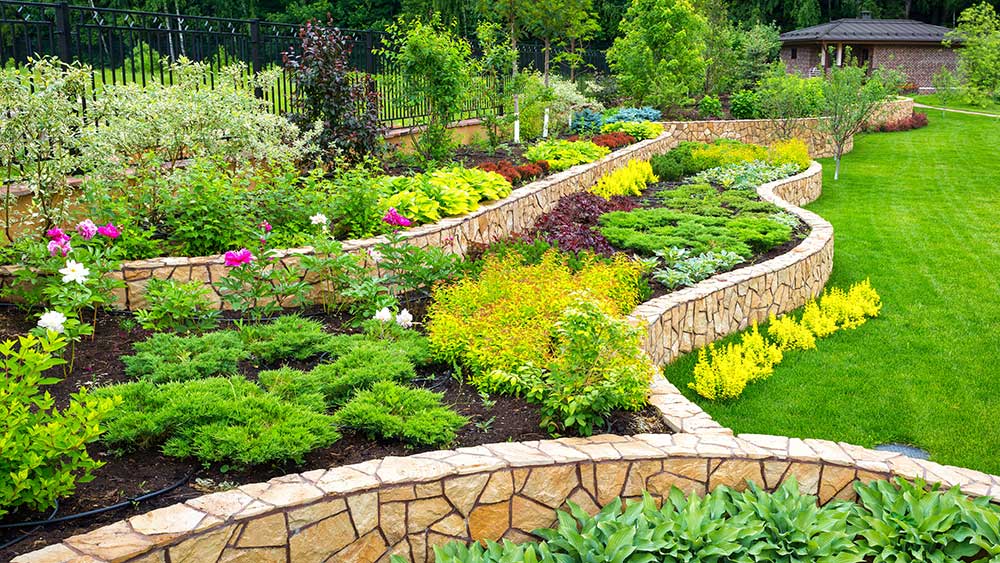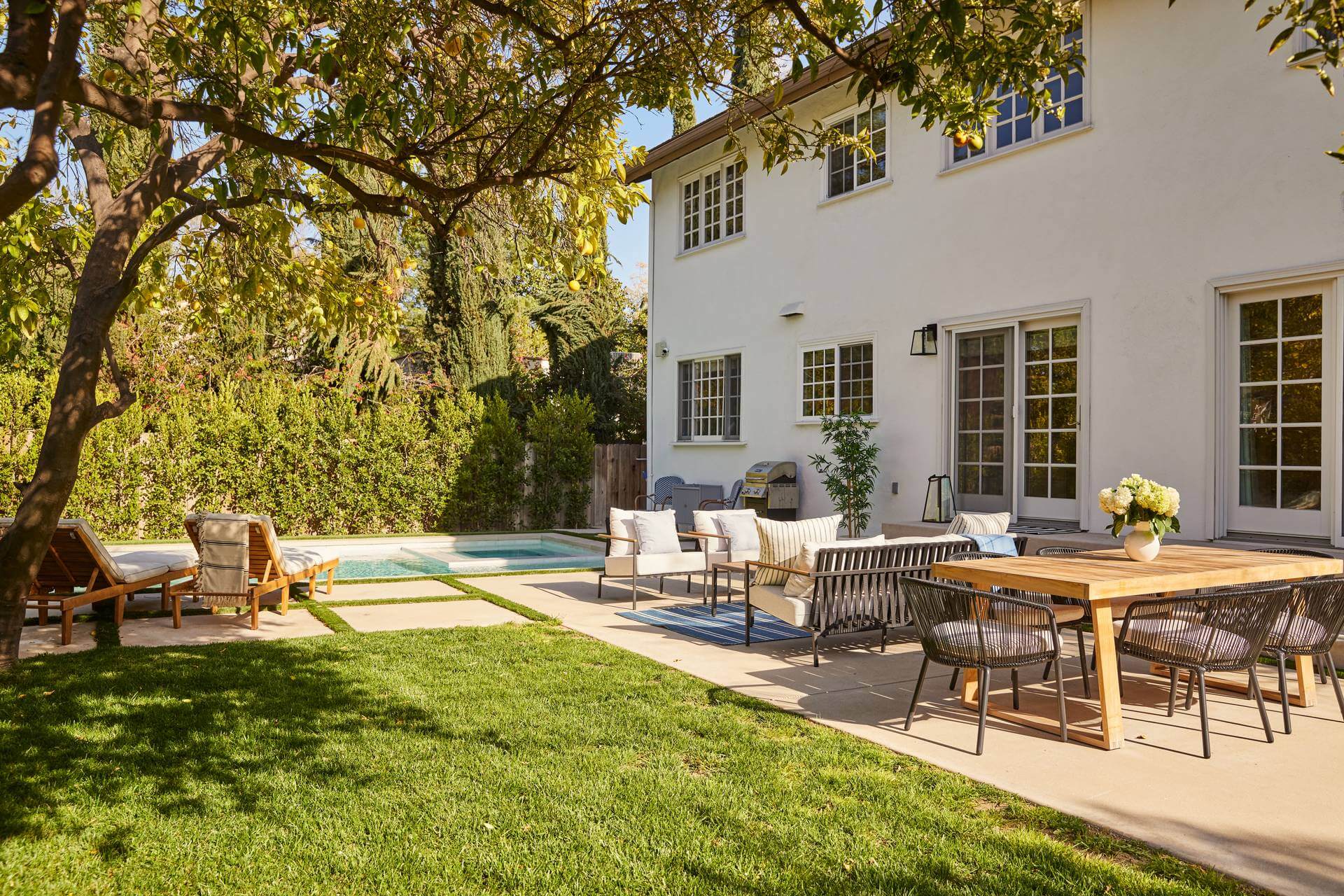Landscapers Fundamentals Explained
Landscapers Fundamentals Explained
Blog Article
Some Known Facts About Landscapers.
Table of ContentsFacts About Landscapers UncoveredThe 2-Minute Rule for LandscapersLandscapers Fundamentals ExplainedThe Facts About Landscapers RevealedThe Definitive Guide to LandscapersThe smart Trick of Landscapers That Nobody is Talking About
- A garden feature where water is represented by an aggregate stone item, normally a crushed rock or granite. These are most frequently located in modern and Japanese yard design.- A rock or flagstone patio, path, or pathway developed without a concrete base. The base would be compacted gravel and the joints would certainly be an aggregate or walkable ground cover. - A rock retaining or free standing wall developed without the use of mortar. - A below ground structure that accumulate water and permits it to slow percolate into the dirt around it.
Landscape design that is compatible with a websites' setting in both look and sustainability without negative impacts to the atmosphere. Edging in the landscape is a line of demarcation that develops visual rate of interest in the yard by dividing one segment from another sector.
Areas can likewise have a feeling of "room" given by trees, various other plantings, fencings, or displays. The landscape near the entry to a structure. A tree, bush or vine, educated to grow on a wall or fence into a specific pattern. Especially helpful for fruit trees, making it simple to gather the fruit and including mess.
Landscapers Fundamentals Explained
:max_bytes(150000):strip_icc()/look-up-look-down-photography--o7ASOHDV9E-unsplash-62ac6efd6d724c7abb7320fefe03b411.jpg)
The element in a landscape layout or area in a landscape that is indicated to be most prominent. The focal point can be a plant, stone, statuary, gathering area, or various other landscape function.

The smart Trick of Landscapers That Nobody is Talking About
Rock product, either rounded or fractured, that is relatively tiny- usually 1" or less. Low plants that are enabled or urged to spread over an area. Can refer to any type of "tough" yard aspects including statuary or boulders however the majority of typically is utilized to refer to paths, outdoor patios, and walls.: Elevation difference between the degree of water in a pond (or the degree of the pump if it rests outside the fish pond) and the top electrical outlet of water which influences performance of the water pump in gph (gallons per hour). Dense shrubs or trees that form a fence, screen, or limit.
A chemical made use of to control weeds. Fence boards that run flat, commonly used in modern or Japanese-inspired landscape layouts. Lines that define spaces within a landscape principle. These usually expand from edges or crucial features of an existing framework. Appropriate usage of fictional lines can assist the landscape really feel connected to the home and various other aspects.
An even more relaxed garden dominated by bent instead of straight bed lines and a much less stiff framework. Conventional PNW landscapes are informal. A plant that spreads out greater than desired, or right into habitats where it does damages. Rose city has a listing of intrusive plants that must not be mounted in landscapes because they can spread out to woodlands or waterways and be like this tough to manage.
An Unbiased View of Landscapers
Smart irrigation controller testimonials and recommendations below. 2-D rendering of the suggested watering system. Can consist of head placements and insurance coverage, pipe sizing, GPM specifications, and products required to mount this system. A watering strategy is usually unnecessary for homes yet prevails for business tasks. Accredited specialist that makes landscapes, educated in design and style along with in horticulture.
The specialist who prepares and establishes landscape projects, typically at a household or small commercial degree with the significant layout incentive on plantings. Landscape designers typically have much less schooling than Landscape Architects and are not certified. A completed landscape design, describing all components for the new landscape. This typically takes the type of a drawing theoretically.
Calcium material utilized to raise the pH in dirt, which will certainly make it much less congenial to moss (Landscapers). A water limited HDPE material utilized beneath ponds, streams and waterfalls in water functions. Making use of several plantings of the very same variety to fill up in a location in the landscape. This can reduce upkeep and water use in the yard.
A mix of concrete, sand, and water that is made use of in stone stonework for setting stones and joints. A layer of compost or bark dust used at the base of a plant. A mass planting of moss. A plant that existed in a geographical area before people started changing the landscape.
How Landscapers can Save You Time, Stress, and Money.
How the yard or a garden aspect is set up in connection to an existing or new attribute or to an instructions. Grasses that Learn More are not cut but expanded in landscapes as perennials.

Plants that give seasonal interest and after that die back in the winter season. Cold season turf that is the most typical turf grass in Portland, OR and the rest of the PNW.An open roofed framework over an outdoor patio or other More Bonuses landscape attribute.
The most typical landscape crushed rock in the PNW. Location of the landscape created to take care of rainfall water till it can saturate into the ground.
Creating a garden function consisting mostly of stones with plantings that complement and can flourish in the rocky atmosphere. Lawn sprinkler head style that turns a stream of water across a location.
The Only Guide for Landscapers

Report this page